|
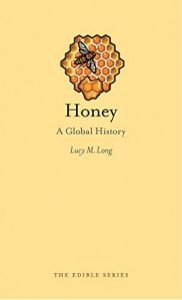 Title: Honey, a global history Title: Honey, a global history
Author: Lucy Long
Sticky, sweet and a natural substance that can be consumed without any human processing, honey is now thought of mostly as a sweetener. In its long history around the world, however, it has been much more. Many cultures have treated it as a staple food, as well as tonic, medicine and preservative. It also has played a role in religious rituals, as a sacred food from the gods. It is seen as a healthy, natural product untainted by human intervention, with flavors and nutritional qualities that stem from its physical surroundings, since it is created from flowering plants that are local and in season. And its creators – bees – are just as mysterious as honey itself. Vital to the pollination of wild plants as well as many domesticated crops, the health of bees is of utmost concern today.
|
|
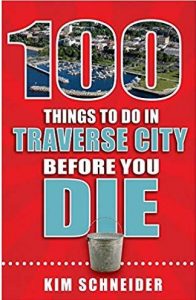 Title: 100 things to do in Traverse City before you die Title: 100 things to do in Traverse City before you die
Author: Kim Schneider
If one of life’s major quests is for balance, it’s no surprise that Traverse City keeps topping national best lists. Here, visitors and locals come for the life balance the serenity offered by the lapping of waves along hundreds of miles of sandy beach, a dark sky just made for wishing upon stars, the simplicity of picking up dinner at a roadside farm stand or from a chef who got her start at one. There’s a balance, too, of the simple and the elevated, as local chefs get noticed on the national stage, wineries scoop up international competition awards, and galleries attract acclaimed artists. There’s an old legend claiming that a dip in the waters of the 45th parallel, which passes through the region, will cure all that ails you. Others think simply a visit with the right mindset and at least one beach bonfire before you go might do the same. Discover for yourself in 100 Things to Do in Traverse City Before You Die.
|
|
 Title: Rocks, ice and dirty stones, diamond histories Title: Rocks, ice and dirty stones, diamond histories
Author: Marcia Pointon
The king of stones, valued since antiquity for their unrivaled hardness, diamonds today are both desired and deplored. Once faceted and polished they glitter on the fingers of brides-to-be and in the ornaments of the super-rich, but their extraction from some of the world’s poorest countries remains contentious. Immensely valuable for their size, diamonds can be easily hidden and transported, making them perfect contraband. Diamonds have been widely used in industry since the nineteenth century and have long been valued for their pharmaceutical and prophylactic properties.
|
|
 Title: How to read poetry like a professor Title: How to read poetry like a professor
Author: Thomas Foster
From the bestselling author of How to Read Literature Like a Professor comes this essential primer to reading poetry like a professor that unlocks the keys to enjoying works from Lord Byron to the Beatles. No literary form is as admired and feared as poetry. Admired for its lengthy pedigree—a line of poets extending back to a time before recorded history—and a ubiquitous presence in virtually all cultures, poetry is also revered for its great beauty and the powerful emotions it evokes. But the form has also instilled trepidation in its many admirers mainly because of a lack of familiarity and knowledge.
|
|
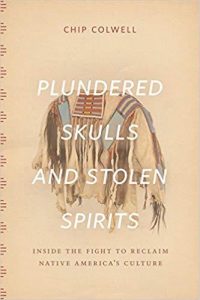 Title: Plundered skulls and stolen spirits, inside the fight to reclaim Native America’s culture Title: Plundered skulls and stolen spirits, inside the fight to reclaim Native America’s culture
Author: Chip Colwell
Who owns the past and the objects that physically connect us to history? And who has the right to decide this ownership, particularly when the objects are sacred or, in the case of skeletal remains, human? Is it the museums that care for the objects or the communities whose ancestors made them? These questions are at the heart of Plundered Skulls and Stolen Spirits, an unflinching insider account by a leading curator who has spent years learning how to balance these controversial considerations.
|
|
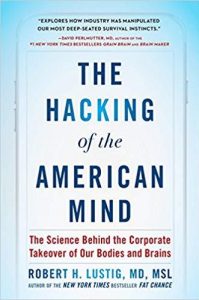 Title: The hacking of the American Mind Title: The hacking of the American Mind
Author: Robert Lustin, MD, MSL
“Explores how industry has manipulated our most deep-seated survival instincts.”—David Perlmutter, MD, Author, #1 New York Times bestseller, Grain Brain and Brain Maker
The New York Times–bestselling author of Fat Chance reveals the corporate scheme to sell pleasure, driving the international epidemic of addiction, depression, and chronic disease.
While researching the toxic and addictive properties of sugar for his New York Times bestseller Fat Chance, Robert Lustig made an alarming discovery—our pursuit of happiness is being subverted by a culture of addiction and depression from which we may never recover.
|
|
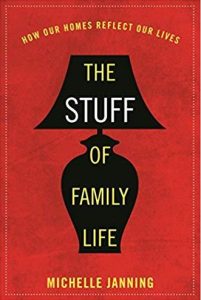 Title: The stuff of family life Title: The stuff of family life
Author: Michelle Janning
Does putting your smartphone on the dinner table impact your relationships? How does where you place your TV in your home affect your family? The Stuff of Family Life takes readers inside the changing world of families through a unique examination of their stuff. From digital family photo albums to the growing popularity of “man caves,” author Michelle Janning looks at not only what large demographic studies say about family dynamics but also what our lives—and the stuff in them—say about how we relate to each other. The book takes readers through various phases of family life, including dating, marriage, parenting, divorce, and aging, while paying attention to how our choices about our spaces and objects impact our lives.
|
|
 Title: Cactus Title: Cactus
Author: Dan Torre
Cacti are full of contradictions. Although many are found in the driest and most barren environments on earth, some grow exclusively in the branches of the rainforest canopy. Many species bristle with ferocious-looking spines, while other varieties are perfectly smooth. And while they might strike us as the most austere plants on earth, nearly all of them exhibit remarkable floral displays—some even larger than the plant itself. In Cactus, Dan Torre explores these unique plants as they appear all around the world and throughout art, literature, and popular culture.
|
|
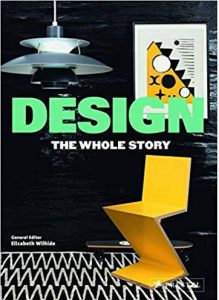 Title: Design, the whole story Title: Design, the whole story
Author: Elizabeth Wilhide
From the 18th century to the present, every aspect of design is covered in one single, spectacularly designed volume that will appeal to experts and general audiences alike. This chronologically organized compendium guides readers through the evolution of modern design, from its emergence in the 18th century to the present. Generously illustrated chapters trace the development of design: the classical revival, the “Art for All” movement, the Japanese influence and Art Nouveau. From there it explores topics such as how the industrial revolution changed the way we create and consume products; identity and conformity in the postwar world; brand loyalty and the counterculture; “Industrial Chic” and “Style Bibles”; the Digital Age and design with a conscience. Along the way readers will discover the close ties between design and social and cultural development. Iconic works that mark significant steps forward―such as Marcel Breuer’s Wassily chair, the creation of the IBM logo, and Matthew Carter’s introduction of a typeface designed to be read on computer screens―are analyzed in terms of their development, impact, and historic importance. An illustrated timeline highlights key influences and events from three centuries. Compiled with the help of an international team of noted design historians and critics, this fascinating and comprehensive book reveals how nearly every aspect of our lives is touched by design.
|
|
 Title: Small Animals, parenthood in the age of fear Title: Small Animals, parenthood in the age of fear
Author: Kim Brooks
It might be the most important book about being a parent that you will ever read.” —Emily Rapp Black, New York Times bestselling author of The Still Point of the Turning World
“Brooks’s own personal experience provides the narrative thrust for the book — she writes unflinchingly about her own experience…. Readers who want to know what happened to Brooks will keep reading to learn how the case against her proceeds, but it’s Brooks’s questions about why mothers are so judgmental and competitive that give the book its heft.” —NPR
One morning, Kim Brooks made a split-second decision to leave her four-year old son in the car while she ran into a store. What happened would consume the next several years of her life and spur her to investigate the broader role America’s culture of fear plays in parenthood. In Small Animals, Brooks asks, Of all the emotions inherent in parenting, is there any more universal or profound than fear? Why have our notions of what it means to be a good parent changed so radically? In what ways do these changes impact the lives of parents, children, and the structure of society at large? And what, in the end, does the rise of fearful parenting tell us about ourselves?
|